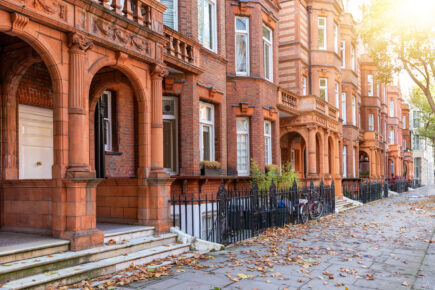The Royal Institution of Chartered Surveyors (RICS) has launched new guidelines relating to cladding on buildings. Following fears about fire safety, it confirms which properties, need additional inspections. RICS is now working to ensure the guidance is implemented by Monday 5 April 2021.
Dame Janet Paraskeva, chair of the RICS Standards & Regulation Board, said that these guidelines:
“…were a crucial step in unlocking the market, by ensuring that only those buildings where there are risks of costly remediation as a result of safety concerns from cladding are subject to additional checks.
“The guidance is anticipated to result in a reduction in the number of EWS1 requests which will therefore allow more focus on the assessments of higher risk buildings, which should speed up the overall process whilst ensuring appropriate protection for lenders and purchasers.”
According to RICS, the new guidance aims to remove confusion about when a valuer is required to request a further review of cladding through an EWS1 form, before valuing a property in a building of multiple occupation.
The guidance also confirms that where a valuer or lender can prove that the building owner has met government advice on multi-storey, multi-occupied residential buildings, an EWS1 form is not needed.
For buildings over 18 metres tall, which have a building control certificate, an EWS1 form would also not be required.
The guidance states that for buildings over six storeys an EWS1 form should be required where:
- There is cladding or curtain wall glazing on the building or
- there are balconies which stack vertically above each other and either both the balustrades and decking are constructed with combustible materials (e.g. timber) or the decking is constructed with combustible materials and the balconies are directly linked by combustible material.
For buildings of five or six storeys an EWS1 form should be required where:
- There is a significant amount of cladding on the building (for the purpose of this guidance, approximately one quarter of the whole elevation estimated from what is visible standing at ground level is a significant amount) or
- there are Aluminium Composite Material (ACM), Metal Composite Material (MCM) or High Pressure Laminates (HPL) panels on the building or
- there are balconies which stack vertically above each other and either both the balustrades and decking are constructed with combustible materials (e.g. timber), or the decking is constructed with combustible materials and the balconies are directly linked by combustible materials.
For buildings of four storeys or fewer an EWS1 form should be required where:
- There are ACM, MCM or HPL panels on the building.
For further advice, please contact our property team on enquiries@bpcollins.co.uk or 01753 889995.














